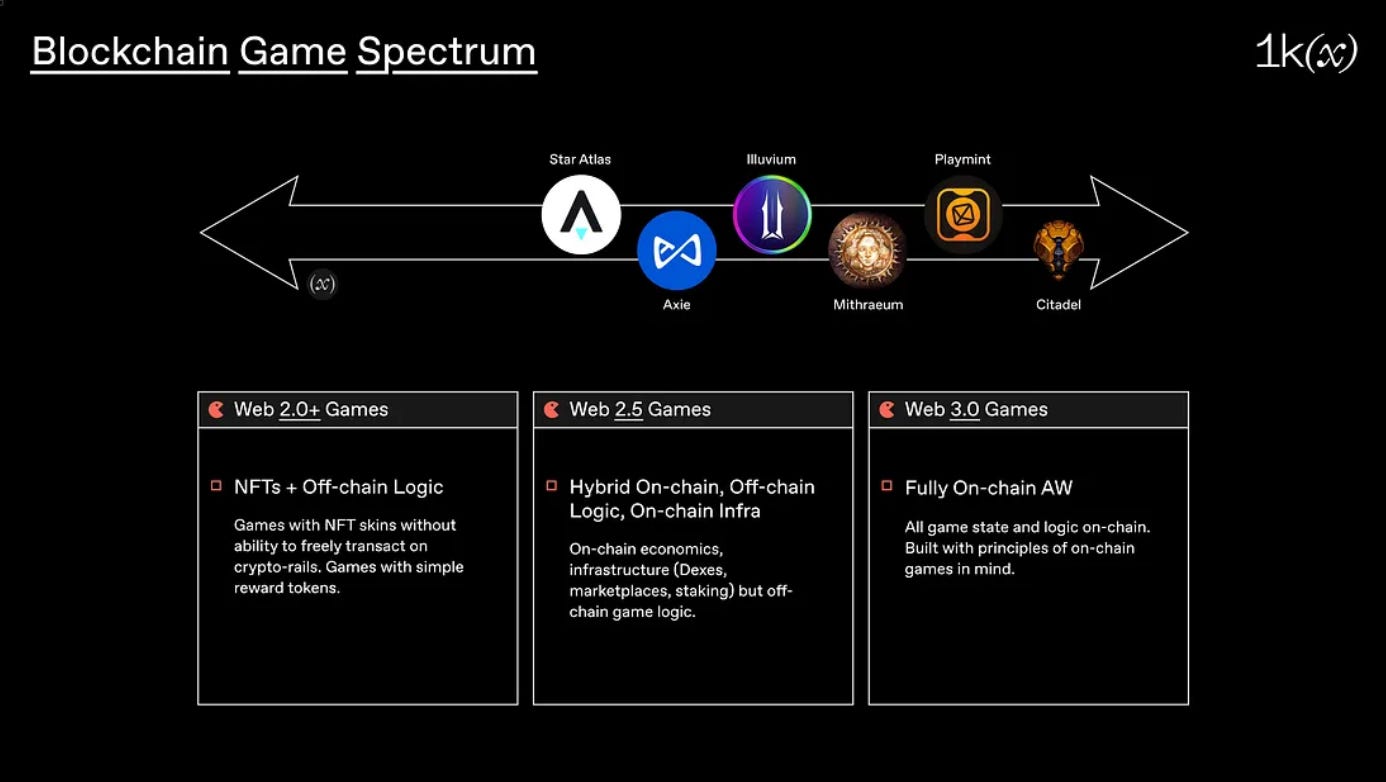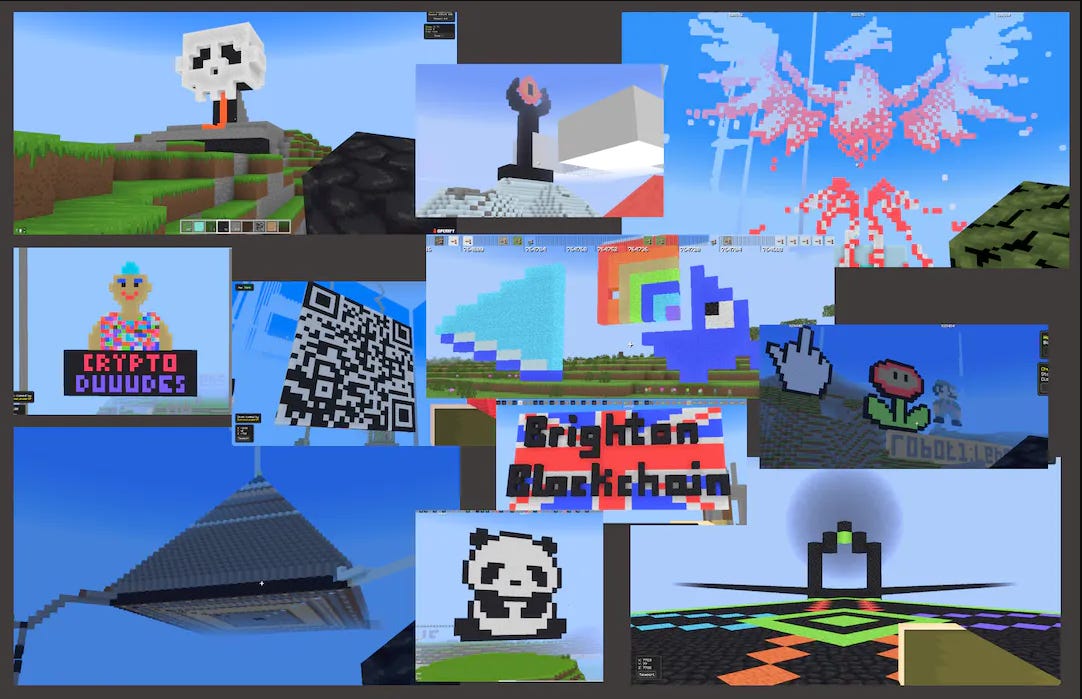
Subscribe to Bankless or sign in
Dear Bankless Nation,
Happy 4th of July! 🗽
Since independence is the theme of the day, let’s talk about the rising field of games that can run independently indefinitely.
I’m talking about autonomous worlds.
These onchain environments are the next great frontier for NFT gaming, so let’s dig into the basics here for today’s Metaversal.
-WMP
Brave New Autonomous Worlds

Fully onchain gaming explained
In crypto, “onchain” has two different connotations. It’s newer, looser sense means to use the blockchain in general. “Put your music onchain,” e.g. mint your songs as NFTs on sound.xyz, et cetera. It’s a rising colloquialism.
Remember, though, that you can mint a token onEthereum while still storing that token’s art or other resources offchain, i.e. on an external storage like a private server or the InterPlanetary File System (IPFS).
Accordingly, the second, older, and more technical meaning of onchain is when everything about an NFT collection or a blockchain-based project is stored directly on the chain itself, e.g. directly on Ethereum.
While onchain storage in this way is relatively expensive compared to offchain alternatives, it offers considerable durability and openness, as onchain projects will exist and be able to built around and upon indefinitely for as long as Ethereum exists.
There’s a spectrum here too, right. Some projects depend on the blockchain minimally, some use a combo of offchain + onchain storage, and some are fully onchain. This spectrum applies to the blockchain gaming scene as well.

Autonomous Worlds, then, come on the “fully onchain” side of the gaming spectrum. In these sorts of projects, the logic and state of the games are totally onchain, meaning their rules and progress are tracked in their smart contracts, and all game data is on the blockchain, which paves the way to interoperability. As such, Autonomous Worlds are also client-agnostic, meaning anyone can create their own interfaces for interacting with the underlying games. Talk about a modder’s dream!
Want to go deeper here? Recommended readings via Calc.stark include:
- 🌎 Autonomous Worlds (Part 1) by ludens
- 🎮 Autonomous Worlds: The Case for Fully Onchain Games by taetaehoho
- 🎯 Building Economically Sustainable, Hyperstructures via Onchain Games by lordOfAFew
- 🎲 The Strongest Crypto Gaming Thesis by Gubsheep
- 🌐 Network Effects in Web3 Game Engines by Ishanee Nagpurkar
Why Autonomous Worlds matter
Autonomous Worlds can be infinite games, i.e. run independently of their creators, open to anyone, and evolving over time. The games become protocols themselves and worlds of their own, inviting users to build upon them accordingly.
As such, the way these games are open systems + constantly online is a huge boon for interoperability and a fundamental shift away from the approach of traditional games, which are closed systems controlled by their creators. In Autonomous Worlds, players can create their own extensions on their own terms, leading to constantly evolving, bottom-up ecosystems.
Furthermore, games made in this fully onchain way can become economic systems in their own right. They can have their own currencies, markets, and economic rules, creating new forms of economic organization that can exist alongside traditional economies. These games are not just about entertainment, then, but also represent paths to new economic + social structures in the metaverse.
Autonomous World game engines

The Autonomous Worlds scene is still pretty small, but it stands to grow considerably over the next decade. Toward that end, some of the most important early work happening now is around the development of “onchain game engines,” i.e. frameworks for launching your own, or building around, Autonomous Worlds.
For example, a handful of onchain game engines you should keep an eye on right now are as follows:
- 🧝 MUD — Developed by the Lattice team, this “multi-user dungeon” framework makes it straightforward to create complex onchain apps on Ethereum Virtual Machine (EVM) networks. You may recall it was used to create the onchain voxel game OPCraft on Optimism last year.
- 🔑 Keystone — Built by the Curio team, this framework is an actual Optimism-based L2 chain with an in-built game engine that specializes in parallelizing game activities. For those that don’t know, Curio is currently building out its own onchain diplomacy game, Treaty, using this tech stack.
- 🥷 Dojo — A StarkNet-based onchain game engine and “toolchain” that supports the Rust and Cairo programming languages.
- 🧿 Argus — Argus is a game publisher working on its own onchain game creator studio stack, the World Engine, an L2 that will support sharding so games can build out horizontally across the network.

Zooming out
In a December 2022 issue of theZora Zine, author and entrepreneur Yancey Strickler forecast the Onchain Era was beginning, which he predicted would be defined as “the period during which much of the world’s creative cultural output, shared histories, and information infrastructure will become established, stored, and accessed onchain.”
I totally agree with Strickler here, and with that said I do see the rise of the Autonomous Worlds genre as part of the blossoming of the Onchain Era. We’ll look back in 10 years and think these sorts of games were obvious in hindsight, yet now we stand at the very start of this field. That’s really exciting, and if Lattice’s recent 100-project strong Autonomous Worlds hackathon is any indication, the fun’s truly only just beginning here! Pay attention and play around, I say.




